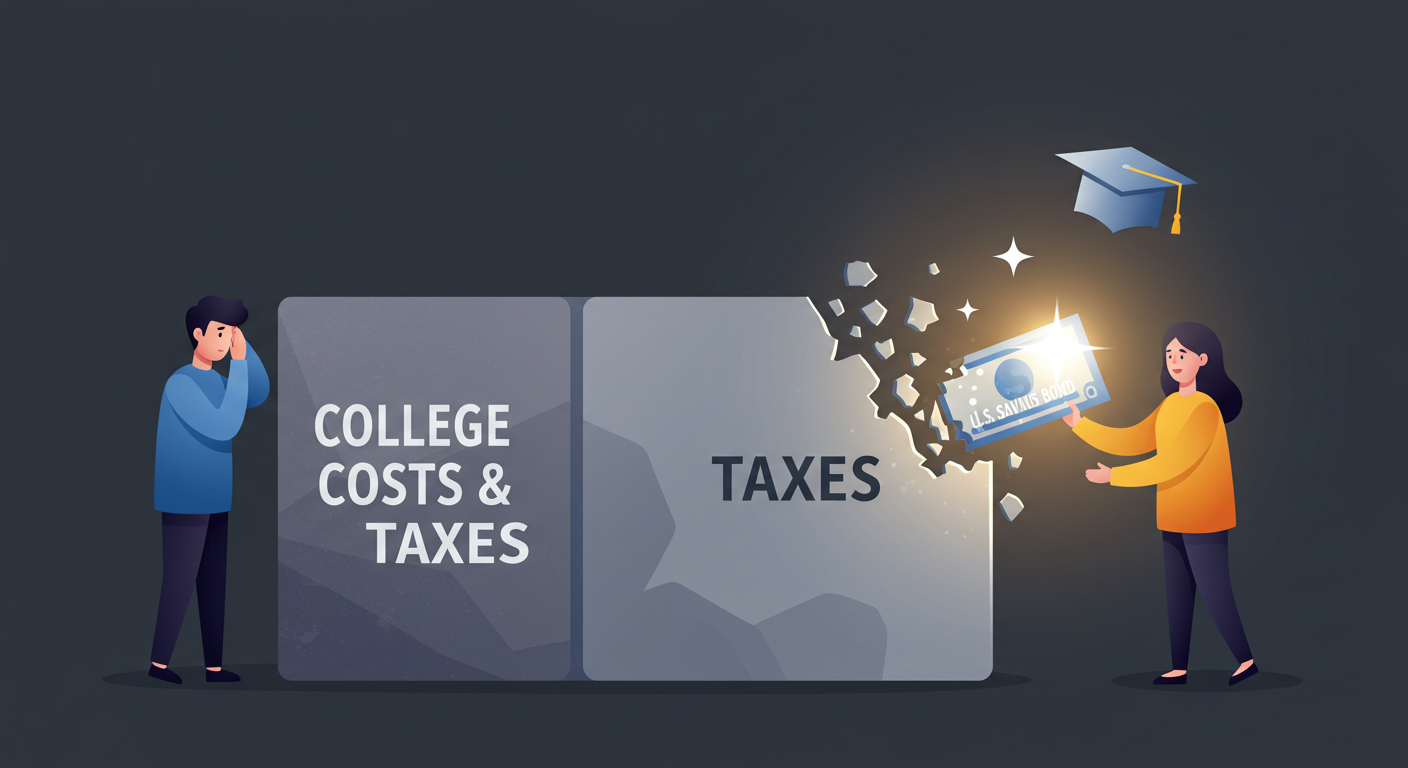Save for School, Save on Taxes: Understanding the Education Savings Bond Program

Planning for education costs can feel like a huge mountain to climb. But did you know that the U.S. government offers a way to potentially save on taxes while saving for education? It's called the Education Savings Bond Program. This post will break down the essentials of this program in plain language.
What Exactly Are Education Savings Bonds?
Generally, the interest you earn on U.S. savings bonds is subject to federal income tax. However, the Education Savings Bond Program offers a special perk: you might be able to exclude some or all of the interest from your income tax when you cash in certain bonds to pay for qualified education expenses.
Who Can Cash In Bonds Tax-Free?
Not everyone who owns savings bonds can get this tax break. You can cash in qualified U.S. savings bonds tax-free if you meet all of the following conditions:
- You pay qualified education expenses for yourself, your spouse, or a dependent.
- Your Modified Adjusted Gross Income (MAGI) is below a certain limit. For 2024, the interest exclusion starts to decrease (is phased out) if your MAGI is between $96,800 and $111,800 if you're single, head of household, or qualifying surviving spouse. If you're married filing jointly, the phaseout range is between $145,200 and $175,200. You can't exclude any interest if your MAGI is $111,800 or more (or $175,200 or more if married filing jointly).
- Your filing status isn't married filing separately.
What Kind of Bonds Qualify?
Only certain types of U.S. savings bonds are eligible for this program. These are:
- Series EE bonds issued after 1989.
- Series I bonds.
Crucially, the bond must be issued either in your name alone or in the name of both you and your spouse as co-owners. Also, you must have been at least 24 years old before the bond's issue date.
What Education Expenses Qualify?
The money from your cashed-in bonds must be used to pay for qualified education expenses at an eligible educational institution. These expenses include:
- Tuition and fees required for enrollment or attendance.
It's important to note that room and board are generally NOT considered qualified education expenses for this program. Also, expenses for courses involving sports, games, or hobbies that aren't part of a degree or certificate program do not qualify.
What is an Eligible Educational Institution?
An eligible educational institution is any college, university, vocational school, or other postsecondary educational institution that is eligible to participate in a student aid program administered by the U.S. Department of Education. This includes virtually all accredited public, non-profit, and proprietary (privately owned profit-making) postsecondary institutions.
How Much Interest Can You Exclude?
The amount of interest you can exclude depends on how much you receive when you cash in the bonds and the amount of your Adjusted Qualified Education Expenses (AQEE). AQEE are your qualified education expenses reduced by certain tax-free educational assistance, such as tax-free scholarships or employer-provided educational assistance. They are also reduced by any expenses used to claim the American Opportunity or Lifetime Learning Credit.
- If the total you receive when you cash in the bonds is not more than your AQEE, then all of the interest may be tax-free.
- If the total you receive is more than your AQEE, then only part of the interest may be tax-free. To figure the tax-free amount, you multiply the interest part of the proceeds by a fraction. The top of the fraction is your AQEE, and the bottom is the total proceeds you received.
Example: Let's say in 2024, a married couple cashed a qualified Series EE bond and received $9,000 (principal of $6,000 and interest of $3,000). They paid $7,650 for their child's college tuition and are not claiming any education credits or receiving other tax-free educational assistance. Their MAGI is $90,000. In this case, their AQEE is $7,650. Since the total proceeds ($9,000) are more than the AQEE ($7,650), only part of the interest is tax-free. The tax-free interest is calculated as: $3,000 (interest) * ($7,650 (AQEE) / $9,000 (total proceeds)) = $2,550.
Important Note on MAGI: As mentioned earlier, your MAGI plays a crucial role in determining if you can exclude any interest and how much. You'll use a specific worksheet in the instructions for Form 8815 to figure your MAGI for this program.
How Do You Claim the Exclusion?
To claim the education savings bond interest exclusion, you'll need to complete Form 8815, Exclusion of Interest From Series EE and I U.S. Savings Bonds Issued After 1989, and attach it to your tax return. You'll then enter the amount of the exclusion on Schedule B (Form 1040), Interest and Ordinary Dividends.
In a Nutshell:
The Education Savings Bond Program can be a valuable tool for saving for education while potentially reducing your tax burden. By understanding the eligibility requirements for both you and the bonds, as well as what constitutes qualified education expenses, you can determine if this program can benefit your financial planning. Remember to pay attention to the MAGI limits, as they can affect your ability to claim the exclusion. Be sure to use Form 8815 when filing your taxes to claim this potential tax break!
